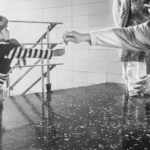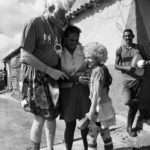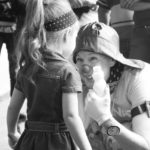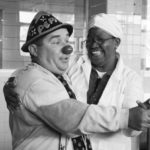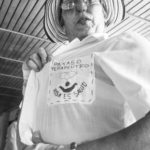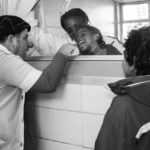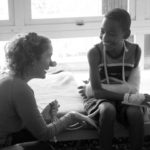A stranger proffers a smile. A friend tells a joke, eliciting a hearty laugh. Without realizing it, you’re singing along to a song on the radio. Who hasn’t felt the pick-me-up of a smile, song, or laugh? In 1971, Dr Hunter “Patch” Adams, (with tongue firmly in cheek), founded the Gesundheit Institute to promote laugh therapy as an important component of comprehensive clinical practice. Once considered an unconventional—and in some circles, unconvincing—approach, today, this method is taught and employed in countries as diverse as Russia, the United States, Afghanistan and Cuba.
Patch Adams, with his signature handlebar moustache and multicolored garb, has sat at the bedside of more than 10,000 dying patients, managing to joke and laugh together; and laughed, danced and sung in war zones, orphanages and refugee camps. “Laughter, happiness, and love can alleviate pain,” says Adams, who has visited Cuba several times to share his novel treatment with health workers, patients and communities.
In 2008, after three hurricanes tore across the country, he returned to Cuba to spread cheer among those affected. Adams and his therapeutic clowns worked together with members of the Cuban children’s theater group, La Colmenita, and the Martha Machado Brigade, a team of Cuban artists and performers convened to provide participatory creation and fun to hurricane victims. This Brigade was incorporated into Cuba’s rehabilitation program in Haiti after the 2010 earthquake in that country, an innovative initiative reported on by MEDICC Review (see: Once the Earth Stood Still, Part II: Mental Health Services in Post-Quake Haiti, July, 2010).
Today, a bilateral program between Cuba’s Ministry of Public Health and Canada-based Therapeutic Clowns International takes therapeutic clowning to the next level on the island. Headquartered at the William Soler Pedriatic University Hospital in Havana, the program incorporates Cuban health workers, including occupational therapists and psychologists, plus participants from La Colmenita. In March 2013, the first in a series of therapeutic-clown training workshops was held in Havana for Colmenita actors and health workers from half a dozen provinces—one came from as far as Granma in the eastern part of the island.
With enthusiastic support from hospital administrators, the Therapeutic Clowns International program aims to incorporate ‘doctor clowns’ in various services of William Soler, one of Havana’s largest children’s hospitals. The photos on these pages were taken during Patch Adams’ 2008 visit and during the March 2013 workshop; the faces of the young patients speak volumes about the importance of laughter to the healing process and to the wellbeing of even the most stricken patients.




